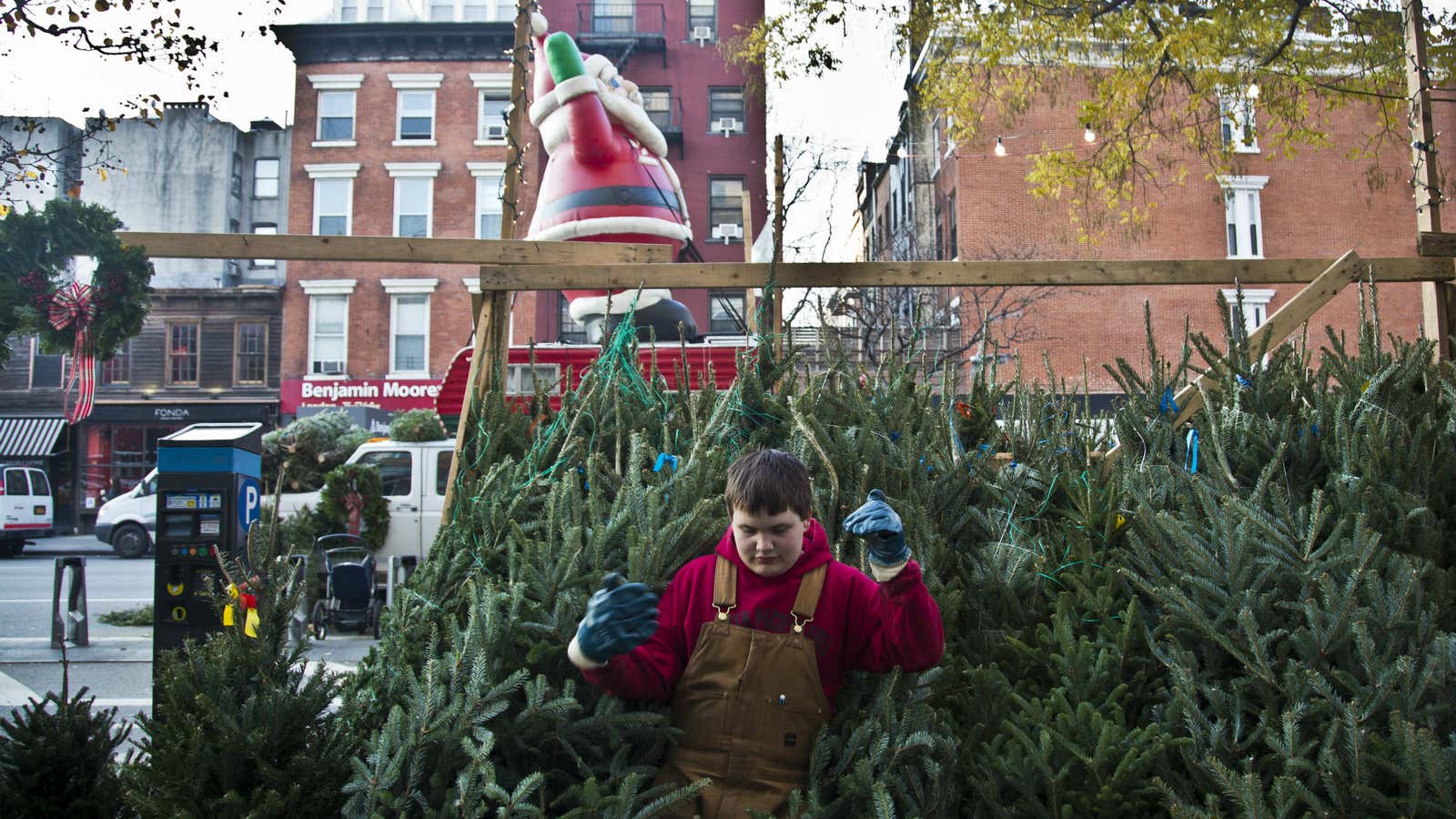Artificial Christmas trees are bad, the National Christmas Tree Association says. They are flammable. They make you sick. They are terrible for the environment.
Natural Christmas trees are bad, the American Christmas Tree Association says. They are flammable. They make you sick. And they are terrible for the environment.
To the canon of Christmas conflicts—the Grinch and the Whos, the Ebenezer Scrooge and Bob Crachit, Rudolph and those jerk reindeer who wouldn’t let him play—add this lesser-known rivalry between two trade organizations responsible for the fake and real trees decking the halls of an estimated 99 million US homes each Christmas.
Their mutual resentment has resulted in public jabs, negative advertising, and accusations that the other is spreading lies and misinformation.
NCTA executive director Rick Dungey blames the ACTA for annual rumors that drought or other environmental conditions are hurting the natural Christmas tree supply. Dungey does not think highly of ACTA’s products or the ACTA itself.
“I call them what they are: plastic tree-shaped decorations. I don’t even call them Christmas trees,” Dungey told Quartz by phone. “I don’t think you should represent yourself as an expert on something when you’re actually not.”
The ACTA was started in 2008 by Thomas Harman, founder and CEO of Balsam Brands, wholesalers of high-end artificial trees. When asked by the Stanford Graduate School of Business to name the greatest innovation of the last 10 years, Harman responded, “Realistic artificial Christmas trees.”
Harman founded the association, which does not disclose its members, in part to counter “inaccurate information” spread by Christmas tree growers, ACTA executive director Jami Warner said.
In Warner’s version, the ACTA is an unwilling participant in an annual war of prickly words.
“We don’t engage. We believe there is no debate. We believe that every Christmas tree is a good Christmas tree, no matter what kind of tree it is,” she said. “It’s antithetical to the spirit of Christmas to say one is better than the other.”
But the ACTA’s website kind of does, with copy pressing a subtle but insistent pro-tree message.
Take, for example, its guide to tree buying. For prospective live tree buyers, the website poses the kind of worrying questions one might consider if taking in a wild ferret: Is it dirty? Does it have insects? Do you have a place to put it that isn’t next to a fire hazard?
In contrast, when buying an artificial tree, all you apparently need to consider is how awesome your fake tree is going to look. Does it have hinged branches? Can you see the center pole? Since your family is going to own and love this tree forever, why not buy a more expensive one?
Real trees outsell fake ones by nearly two to one each year, according to research conducted by the NCTA (the ACTA found similar numbers).
But those fake trees never die, and the Christmas tree war is in part one of attrition. A whopping 81% of the trees on display in US homes this year are fake, according to a Nielsen survey conducted by the ACTA.
